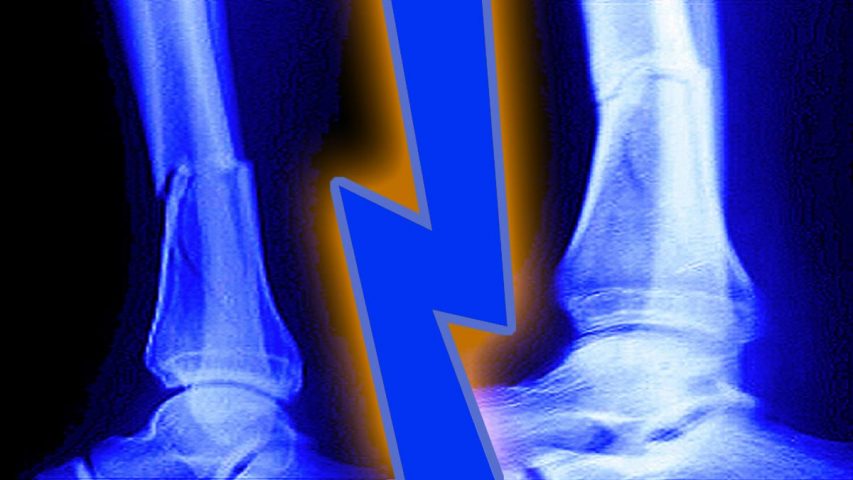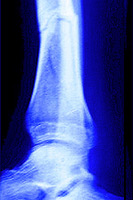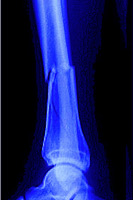- Have any questions? Contact us!
- info@dr-rath-foundation.org

Strong Connective Tissue: A Key Factor In Controlling Cancer Metastasis
October 4, 2017
Micronutrient Synergy is Helpful in Painful Joints
October 4, 2017Micronutrients You Rarely Consider For Healing Bone Fractures


Significant healing seen at 10 weeks with miconutrients

Broken bone
Everyone is at risk of fracturing a bone from a fall, sports activities, or a car accident. However, fractures are all the more likely to occur in people suffering from osteoporosis. One of the most painful types of injury, fractures inevitably require a lengthy recovery period.
The most common bone fracture, especially in active adults and children, is a broken leg. This often involves a tibial (shinbone) fracture. In the US approximately 492,000 tibial fractures are reported every year, resulting in close to 400,000 days stay in hospital. The usual time for healing a tibial fracture is 12 to 16 weeks. However, this is often increased due to a high incidence of complications requiring strong painkillers for the patient. In European countries a total of 620,000 osteoporosis-related hip fractures were reported in 2010, according to a report.
A common perception is that vitamin D and calcium are the only nutrients needed for healthy bones, and/or that they aid in the fracture healing process. However, this overlooks the fact that the framework of the bone on which calcium and other minerals are deposited is made of a protein – collagen. Without healthy collagen, bone cannot form or function properly. Healthy bone formation depends not only on sufficient amounts of calcium and vitamin D, but more importantly on a proper supply of vitamin C, the amino acids lysine and proline, and other collagen-supporting micronutrients. Since the human body cannot produce vitamin C or lysine internally, deficiencies of these critical nutrients are very likely and can be further depleted by the stress associated with a bone fracture.
In a randomized double-blind placebo-controlled clinical trial* involving 131 patients with tibial shaft fracture, we evaluated the effect of supplementation with collagen-building micronutrients on fracture healing time. The ages of the study participants ranged from 15 to 75 years. We observed that the group of patients taking essential micronutrient supplements containing vitamin C, lysine, proline and vitamin B6 experienced faster fracture healing times. In these patients, fractures healed in 14 weeks. In contrast, it took 3 weeks longer for the patients taking the placebo (sugar pill) to experience similar healing. In addition, in about 25% of the patients in the supplemented group the bone fractures healed by as early as 10 weeks; this was noted in only 14% of the patients in the control group. The patients in the supplemented group also reported improvements in their general feeling of well-being.
This study shows that a frequently missing factor in bone health – healthy collagen – plays an important role in the optimum healing of bone fractures. A simple supplementation with specific micronutrients could greatly reduce healing time and patient suffering, as well as lessen the economic burden on patients’ families and the healthcare system.
Ref:
- J. Jamdar, et al., Journal of Alternative and Complementary Medicine 2004,
10 (6): 915-916.



